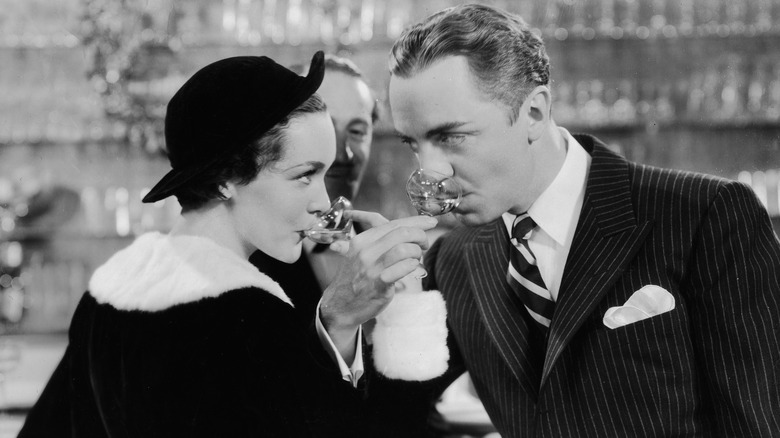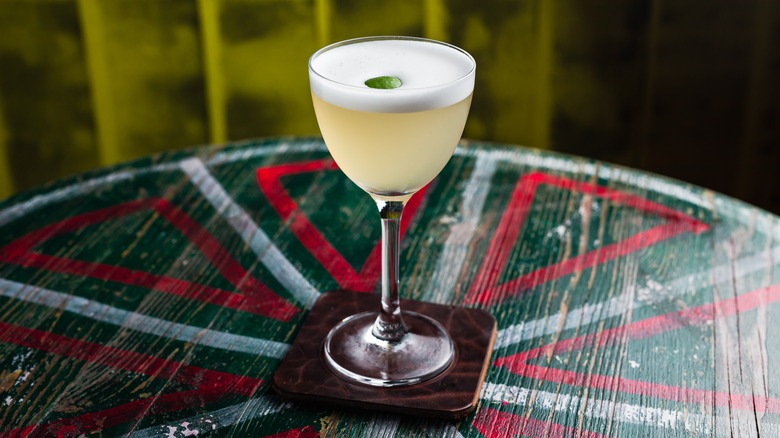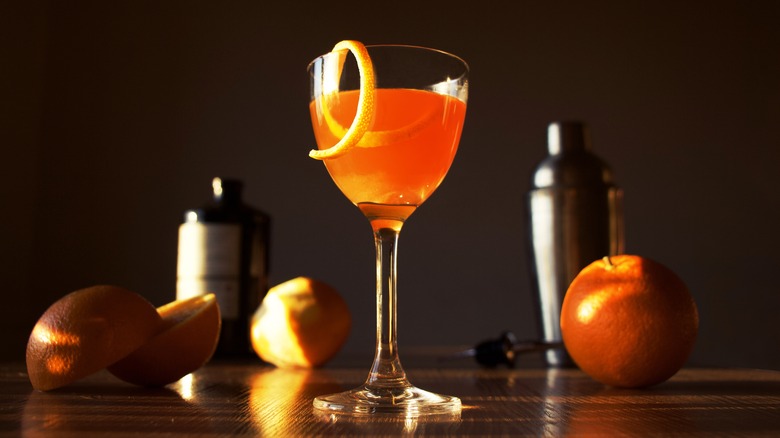The Cinematic Origins Of The Nick & Nora Cocktail Glass
We may receive a commission on purchases made from links.
These days, the Nick & Nora cocktail glass feels inescapable. These dainty coupes show up at cocktail bars all over, typically holding stiff, stirred drinks like dirty martinis or Manhattans. They look like something out of Prohibition, but you might be surprised to learn that they have only really been in circulation since the late 1980s — though they were inspired by a classic noir film from 1934.
The Nick and Nora in question are Nick and Nora Charles, from the 1934 detective novel "The Thin Man." But they are more commonly recognized from the 1934 film of the same name, starring William Powell and Myrna Loy as Mr. and Mrs. Charles. Nick is a retired detective — and Nora the wealthy heiress he married. On a holiday in New York, the two get swept up in a murder mystery. But they certainly keep their whistle wet while they're out solving crimes. There is a lot of drinking in this movie, and if you take a peek at the trailer you're likely to spy the tiny cocktail glasses that make an appearance throughout the film — the aptly named Nick & Nora glasses.
Martini vs. Nick & Nora
So how did Nick & Nora enter cocktail history? Well, it all started in the late 1980s when bartender Dale DeGroff was working at the Rainbow Room in New York City. Now, the 80s aren't known as a discerning era for cocktail culture, and that's for good reason. Cocktails were loud and in your face, neon concoctions with heavy, kitschy glassware to match — think Blue Lagoons, Singapore Slings, and Cosmopolitans. The enormous V-shaped martini glass reigned supreme (one might call it a dark time in the otherwise glamorous history of the martini).
DeGroff wanted something different. He was betting on classic cocktails from the early 20th century, and he wanted glassware that was more subtle and refined than what was popular at the time. He found a local glassware company, Minners Designs, and asked them to revive an old set of discontinued glasses called the "Little Martini" glasses. He nicknamed them the Nick & Nora glasses and became such a dedicated customer that when Minners was sold to Steelite International, the company officially renamed this glass the Nick & Nora.
Old school cocktail glasses were smaller
What is funny about the cinematic connection to the Nick & Nora glass, however, is that the glasses we know today by that name don't actually bear that much of a resemblance to the glasses shown in the film. While the Nick & Nora glass looks a little bit like a tiny wine glass without a rounded bottom, glasses of that period, and the ones shown in the film, are more like miniature bowl-shaped martini glasses or even miniature coupe champagne glasses.
These smaller glasses were common in the early 20th century, as smaller drinks were easier to consume quickly before they warmed up. However, convincing bar customers to appreciate the smaller glasses was a challenge for earlier employers of the Nick & Nora glass. If you're used to giant cocktails, and then someone serves you a little five-ounce glass, you might wonder where the rest of your drink has gone. This is why cocktails served in Nick & Nora glasses are still sometimes served with a sidecar. But despite their small size, their enormous popularity has yet to flag.



